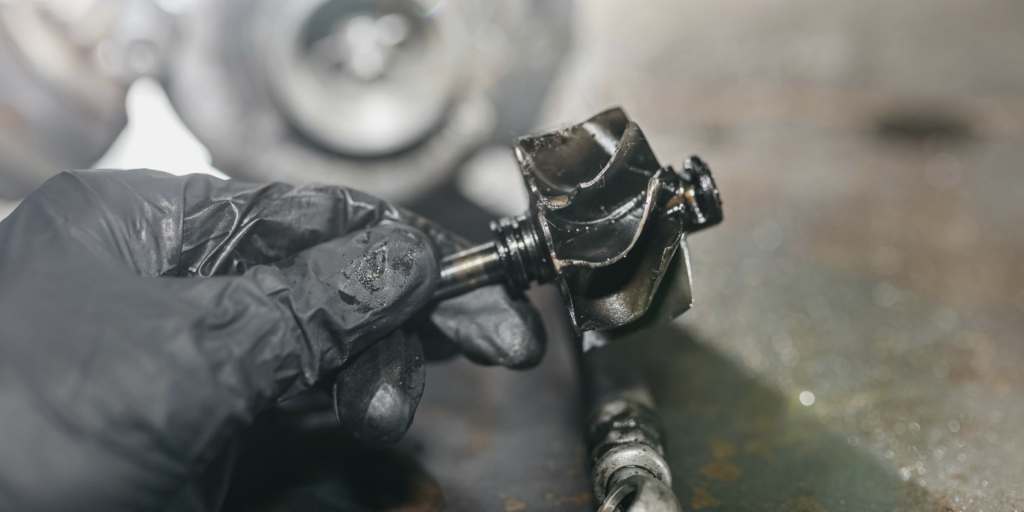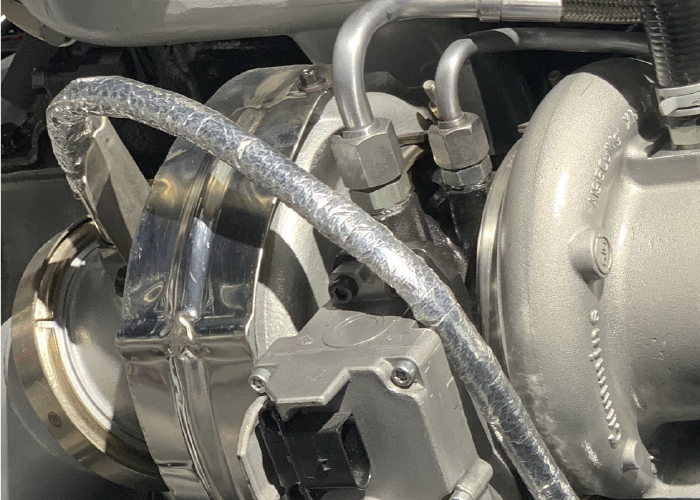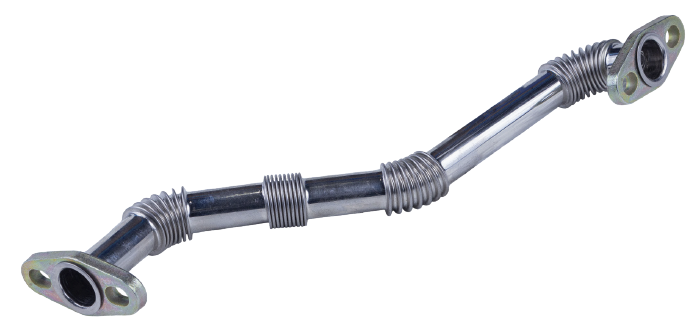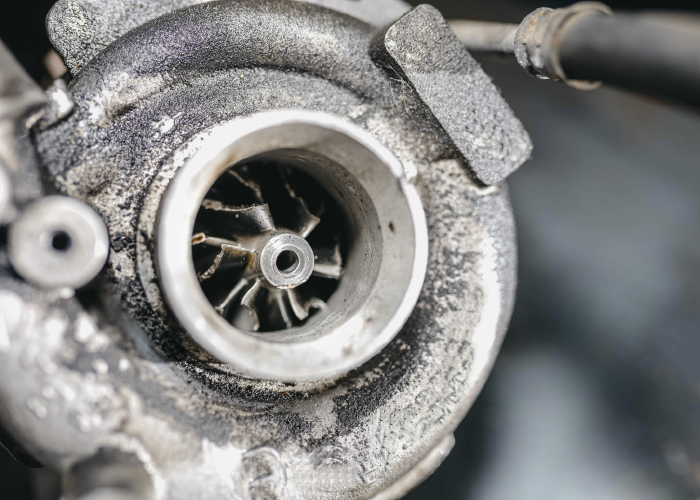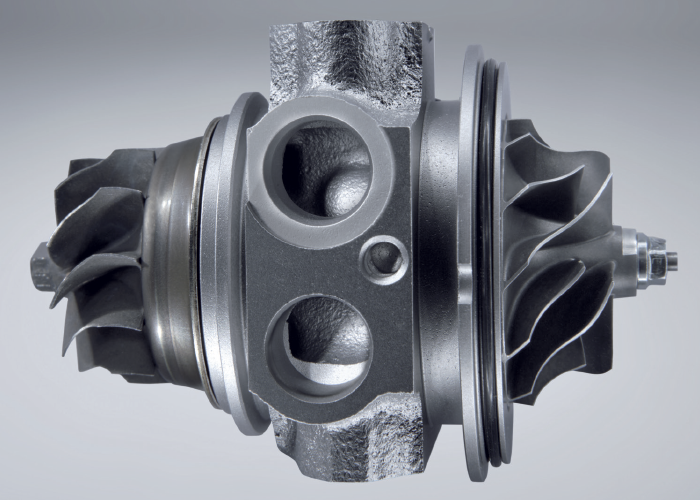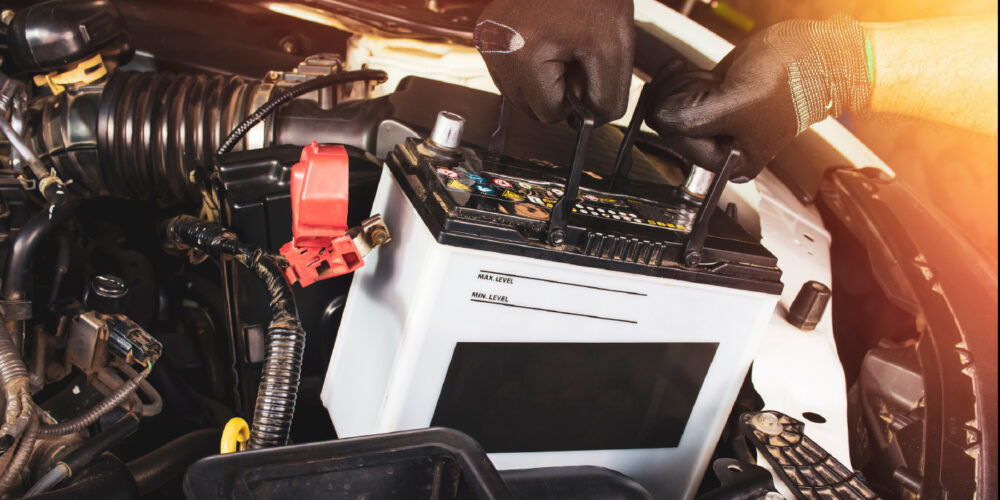25 years ago, owners of turbocharged vehicles had some interesting ways to improve the longevity of a turbocharger. Some owners opened the hood halfway when they parked. Other owners would let the engine idle for long periods before the engine was shut off. Some owners purchased a turbo timer that would run the engine when parked for a time with the key out.
All of these methods were designed to circulate oil through the turbocharger before the engine was shut off. The lack of circulating oil caused carbon deposits in the lines and passages after the engine was shut off the the engine heat soaked.
When an engine stops turning, the oil flowing to the turbocharger stops. The oil inside the turbocharger might drain out of the center section through the return line. The remaining oil in the center section is heated to the point where it is turned to carbon deposits. Carbon deposits can obstruct the passages that carry oil to the turbine shaft and bearings.
By the early 1990s, many import car and truck manufacturers stopped using turbochargers on their engines. Many replaced turbocharged four-cylinder engines with larger displacement V6 and V8 engines. Why? Automakers had had enough of rising warranty costs and consumers began to associate turbochargers with trouble.
25 years later, turbochargers have made a comeback – and it’ s been quick. In 2010, only 5 percent of vehicles sold in the U.S. were turbocharged. 2020, almost 35 percent of cars and trucks sold were turbocharged. How did they overcome the negative image? First, automakers do not advertise that models are turbocharged in brochures or with a badge on the trunk lid. Instead, they call the engines “Eco” or put a “T” in the engine’s name. Second, they have developed ways to cool the turbo after the engine is shut down to alleviate heat soak.
OIL AS A COOLANT
When the engine is running, the oil is a coolant that draws heat out of the turbocharger. But, for the oil to cool the turbo, it must flow. Restrictions in the oil feed or return lines can cause the turbocharger to operate hotter than normal.
The most common restriction for turbochargers are not blockages in the feed line, but elevated crankcase pressure. The return line on most engines is plumbed into or above the oil pan. If crankcase pressures are high due to blow-by or a restricted PCV system, the oil coming from the turbocharger will have to overcome the pressure to drain into the oil pan. This pressure can limit the flow of oil to cool the turbocharger.
Oil that is certified by an OEM for its turbocharged engines can handle the heat. NOACK testing is performed by heating the oil to 250˚C for one hour under a constant flow of air. The oil is weighed before and after the test. When oil evaporates, it leaves behind carbon and sludge that can damage the turbo and engine. The lower the NOACK number means less oil has evaporated. Also, some manufacturers might give a “flash point” temperature for the oil. This number is the temperature at which the oil evaporates when exposed to heat. For turbocharged engines, a higher flash point means it will not break down when pumped through the hot center section.
If a turbocharger has failed, it is recommend the supply line and return lines be replaced. Often the lines will look normal at the connection to the center section, but the line could be blocked.
ENGINE COOLANT AS TURBO COOLANT
If you were to listen to an Audi, Fiat or BMW when the driver walks away, you might hear a faint buzzing noise. This noise is from an electric pump circulating engine coolant through the turbocharger’s center section for 2 to 15 minutes after the engine stops turning.
The circulating coolant helps to cool the turbocharger. Most pumps will free spin when the engine is running and engage when the engine is shut off.
The run time and speed of the pump is determined by many factors. Most systems look at the coolant temperature of the engine using sensors mounted in the head, block and radiator. Once a sufficient drop in temperature is measured, the pump will be shut off. Some systems will also look at previous calculated load and throttle position before the key was removed from the ignition to determine cooling pump run times.
Many engine management systems look at battery voltage to determine how long the pump can run to cool the turbocharger. Most sophisticated systems use the battery life monitor that measures the current draw through the positive battery cable. Most systems will prioritize cranking and starting the engine over cooling the turbocharger in situations where the battery is marginal.
When selecting a battery, it is still critical that the cold cranking amps match, but it is vital the reserve capacity (RC) of the new battery meets or exceeds the specifications of the original battery. The reserve capacity of a battery is listed in minutes and is measured by charging a battery at 80°F and applying a 25 amps load. When the battery drops below 10.5 volts, the test is complete. Turbocharged applications need more reserve capacity in the battery due to higher key-off battery loads.
It is estimated that by 2022, 50% or more of vehicles sold in the U.S. will have one or more turbochargers under the hood. But, today there are significant numbers of import vehicles on the roads that are turbocharged and need service. Some of the fixes do not involve replacing the turbocharger, but the support components that keep it healthy.

